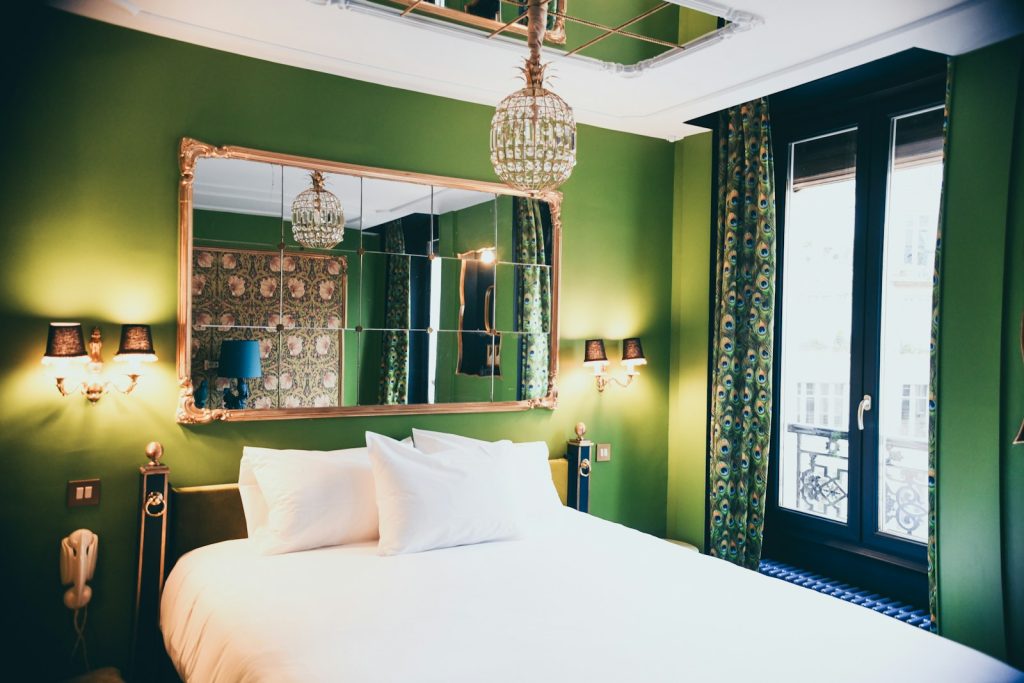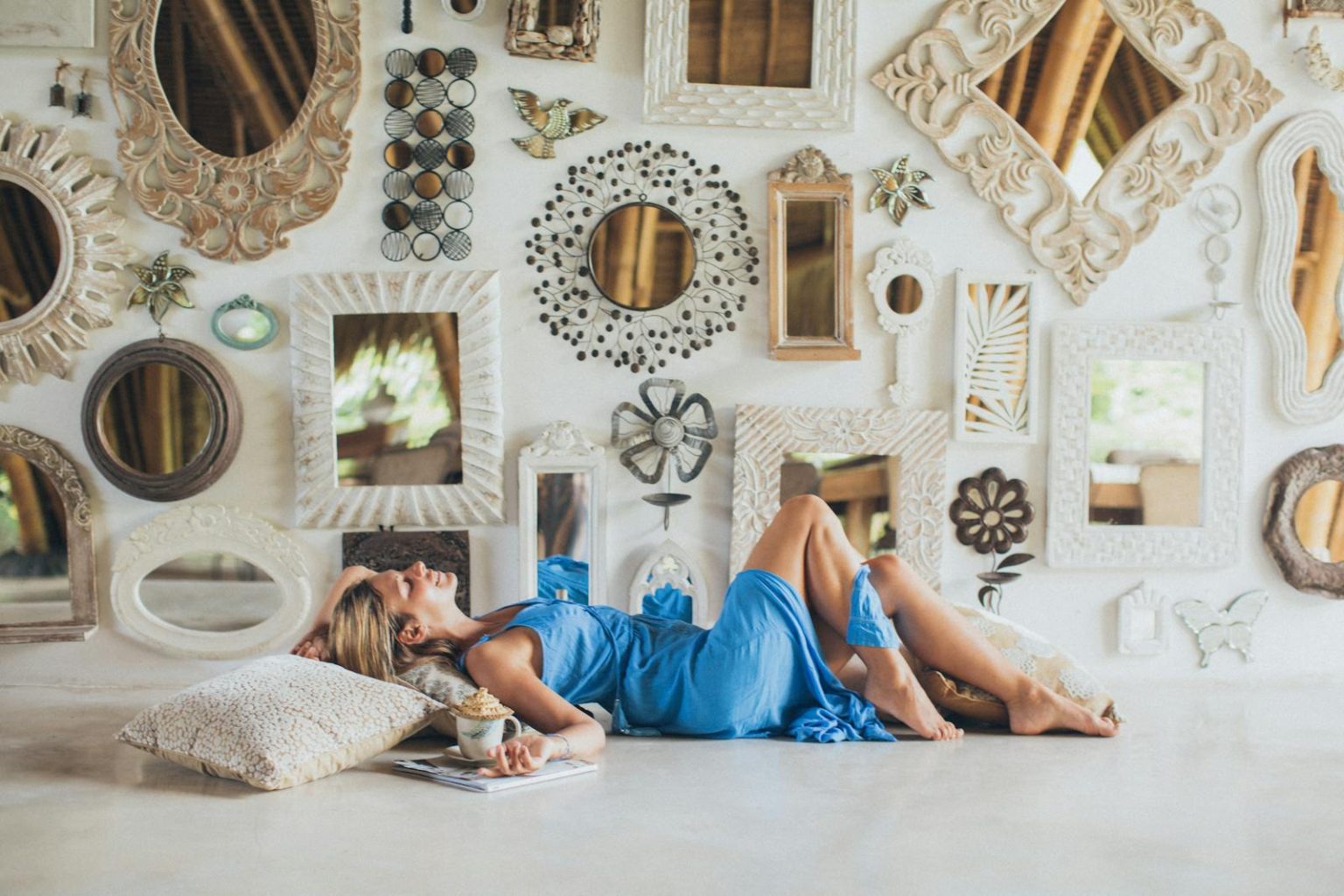Mirrors are versatile elements in interior design, adding brightness, creating the illusion of space, and bringing an extra touch of elegance to any room. Whether you’re using them for decoration, to visually enlarge a small space, or to add a dramatic focal point, the right mirror can work wonders.
Here are the top 10 tips for using mirrors in your home’s interior design.
1. Strategic placement for lighting
Place mirrors to reflect natural or artificial light. A well-placed mirror can brighten a dark room and make the space feel airier.
- In front of a window: Placing a mirror in front of a window reflects the light, bringing a sense of openness and freshness into the room.
- Behind a light source: Positioning a mirror behind a lamp or chandelier amplifies the brightness.
2. Creating the illusion of space
Mirrors can make small rooms appear larger. Use large mirrors to create the illusion of depth and space.
- Full-wall mirrors: A large mirror on a full wall can visually double the space.
- Oversized mirrors: Free-standing or wall-mounted oversized mirrors can extend the visual area of the room.
3. Mirrors as focal points

Mirrors can be used as focal points in a room, drawing attention and adding visual interest.
- Decorative frames: Choose mirrors with unique and elaborate frames to create a strong visual impact.
- Mirror arrangements: Create a collection of mirrors in various shapes and sizes for an artistic effect.
4. Using mirrors in hallways and corridors
Hallways and corridors can feel wider and brighter with the help of mirrors.
- Narrow and long mirrors: Mounting narrow and long mirrors on the side walls can visually expand the space.
- Mirrors at the end of a corridor: Placing a mirror at the end of a hallway creates depth and draws attention.
5. Mirrors in bathrooms

Mirrors are essential in bathrooms but can also be impressive design elements.
- Large mirrors above the sink: Large mirrors above the sink make the bathroom appear more spacious.
- Mirrors with built-in lighting: Choose mirrors with integrated LED lighting for a modern and functional look.
6. Mirrors in the bedroom
In the bedroom, mirrors can add both functionality and aesthetics.
- Mirror closet doors: Closet doors with mirrors visually enlarge the room and are highly practical.
- Decorative mirrors above the bed: Placing a decorative mirror above the bed can create an elegant focal point.
7. Mirrors in the living room
In the living room, mirrors can add luxury and sophistication.
- Oversized mirrors: Choose an oversized mirror and place it on the wall behind the sofa for a dramatic effect.
- Mirrors above the fireplace: A mirror above the fireplace reflects the light from the fire and adds elegance.
8. Mirrors in workspaces
Mirrors can bring a sense of openness and light to offices and workspaces.
- Mirrors above the desk: Placing a mirror above the desk can visually expand the workspace.
- Mirrors as decorative panels: Using mirrors as decorative panels can add a modern and professional touch.
9. Choose the right frames
The frames of mirrors play a crucial role in their style and visual impact.
- Vintage frames: Mirrors with vintage frames add a classic and nostalgic charm.
- Minimalist frames: For a clean, modern look, opt for simple and minimalist frames.
10. Mirror maintenance
To keep mirrors shining and clear, it’s important to clean them regularly.
- Appropriate cleaning products: Use specific mirror cleaning products and a soft cloth to avoid scratches.
- Frequent cleaning: Clean mirrors weekly to remove dust and smudges.

Mirrors are powerful tools in interior design, capable of transforming any space. From creating the illusion of space and brightness to adding a dramatic focal point, creative use of mirrors can significantly enhance your home’s look.
By applying these tips, you can position mirrors in a way that brings harmony, style, and functionality to your home.

